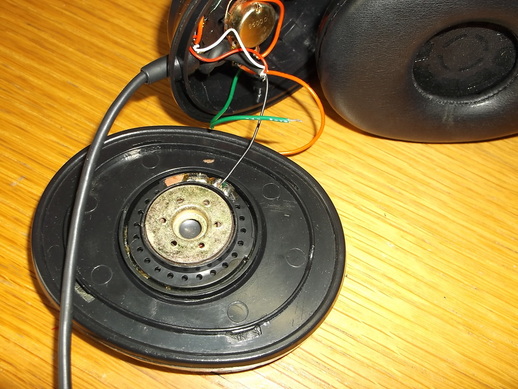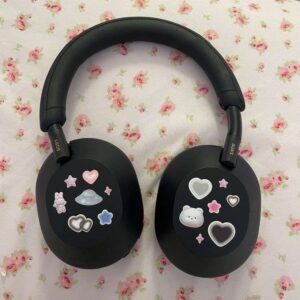Headphone Repairs — Ever had your favorite pair suddenly go silent or crackle mid-song? Whether it’s a frayed cable, a broken jack, or a dead earcup, headphone issues can be frustrating. But do you need to throw them away, or can they be fixed at home?
Yes, many headphone problems are repairable without needing expensive replacements. From fixing broken wires and faulty jacks to solving wireless issues and replacing ear pads, we’ll show you exactly how to bring your headphones back to life.
This guide also covers tools you need, when to go DIY, and when to call in the pros. But there’s so much more you can learn from seasoned experts like iFixit and audiophile forums trusted by sound professionals worldwide.
So, let’s dive into the complete guide to headphone repairs—and discover just how easy it can be to save your sound gear.
Understanding Headphone Types and Their Components
Before diving into repairs, it’s important to understand the different types of headphones and their basic components. This will help you diagnose problems more accurately.
Types of Headphones
- Wired headphones (3.5mm, USB-C, Lightning)
- Wireless headphones (Bluetooth)
- Over-ear, on-ear, and in-ear (earbuds)
Key Components
- Speaker drivers
- Cables and connectors
- Internal wiring
- Microphones and buttons (for headsets)
- Bluetooth chipsets and batteries (for wireless)
Knowing your headphone’s structure can make repairs less intimidating.
Common Headphone Problems and Their Causes
Headphone issues range from minor annoyances to serious technical failures. Let’s look at the most common problems users face:
- No sound or one side not working
- Distorted or crackling audio
- Loose or broken headphone jack
- Frayed or broken cables
- Bluetooth pairing problems
- Battery not charging (wireless)
- The microphone or buttons are not functioning
- Physical damage to the headband or ear cups
Many of these can be repaired at home with a little patience and the right tools.
General Tips
- Before attempting any repairs, check if your headphones are still covered under warranty. If they are, take them to the manufacturer for repair.
- Be gentle while handling your headphones, as rough handling can cause damage.
- Always use the appropriate tools for repairs. Using the wrong tools can cause more damage.
- Always start with the easiest and simplest repairs before moving into the more complex fixes.
Tools You’ll Need for Headphone Repairs
Before beginning any repair work, gather the following basic repair tools:
- Precision screwdriver set
- Soldering iron and solder
- Multimeter (to test continuity)
- Replacement parts (cables, drivers, jacks, ear pads)
- Super glue or epoxy
- Tweezers and spudger
- Heat shrink tubing or electrical tape
These tools are inexpensive and readily available online or at local hardware stores.
Problems & Fixes
Problem 1: Damaged Cables
The most common problem with headphones is damage to the cables. Here are some of the ways you can fix this problem:
- Method 1: Cut the damaged portion of the cable using a wire cutter. Then strip the ends of the wires and twist them. Connect the wires with the same color using a soldering gun. Finally, cover the wires with electrical tape.
- Method 2: If only one side of the headphones is working, then the problem is with the cable connector. Disconnect the cable from the headphones and cut about 2 cm of the cable. Strip the ends of the wires and twist them. Place a connector cap on the twisted wires and insert it into the headphones.
Problem 2: Damaged Ear Pads
If your headphone ear pads are damaged or worn out, then you can replace them with new ones. Follow these steps:
- Remove the old earpads by gently pulling them off the headphones.
- Attach the new ear pads by stretching them over the headphone cups. Make sure they fit snugly.
Problem 3: Loose Or Broken Headband
If the headband of your headphones is loose or broken, you can fix it by:
- Method 1: Loosen the screws that hold the headband to the headphone cups. Adjust the headband and then retighten the screws.
- Method 2: Replace the broken headband with a new one.
Problem 4: Low Or Distorted Sound
If your headphones produce distorted or low sound, there might be a problem with the speakers. Here’s how to fix it:
- Check the volume levels on your device to ensure that it is not the source of the problem.
- Clean the headphone speakers and remove any dirt or debris that may be blocking them.
- If these steps fail, then you might need to replace the speakers.
Problem 5: No Sound
If your headphones do not produce any sound, here are some possible solutions:
- Check if your headphones are properly connected to the device.
- If they are connected, check if the volume is on and if the device is on mute.
- Try connecting your headphones to another device to see if the problem is with your headphones or device.
- If none of these steps work, then your headphone speakers may be defective and require replacement.

Credit: allanfaulds.weebly.com
Fixing Audio Issues
No sound from the headphones
If your headphones are silent when they should be pumping out your favorite tunes, first check the volume settings on your device. If that’s not the issue, inspect the headphone jack for any debris or damage. Cleaning it gently with a cotton swab can often restore audio.
Crackling or distorted audio
Crackling or distorted sound is often a sign of a loose connection or damaged cable. Try wiggling the cable near the connector to see if the sound improves. If not, you may need to replace the cable or repair any loose connections inside the headphones.
Fixing Physical Damage: Headbands and Ear Pads
Over time, headbands crack, ear pads wear out, and hinges may break.
Solutions:
- Use epoxy glue to repair cracked plastic or metal bands.
- Replace ear pads with compatible ones from online marketplaces—this improves comfort and sound isolation.
- For broken hinges, look for 3D-printed parts or replacement kits.
These simple repairs can make your headphones feel like new again.
Damaged cables
Frays, cuts, or exposed wires in the headphone cable can lead to intermittent audio or complete failure. In such cases, it’s best to replace the cable altogether. You can find replacement cables online or at electronics stores, ensuring compatibility with your headphones.
How to Solve Wireless Headphone Problems
Wireless headphones bring convenience—but also more complexity.
Bluetooth Pairing Issues
- Reset the headphones and clear paired devices.
- Update firmware if available.
- Delete and reconnect the device from your phone or PC.
Battery Not Charging
- Check the charging port for debris.
- Test the USB cable and adapter.
- If the battery is the issue, you may need to replace it, which requires opening the casing and soldering a new battery—only recommended if you’re comfortable with electronics.
Dealing with Connectivity Problems
Wired connection problems
For wired headphones, check both ends of the cable for a secure connection. Sometimes, a loose connection can lead to one-sided audio or no sound at all. If the cable is damaged beyond repair, consider replacing it with a new one.
Replacing Components
Ear pads replacement
Over time, the ear pads on headphones can wear out, leading to discomfort and compromised sound quality. Replacing them with new pads enhances comfort and improves acoustics, allowing you to enjoy your music or games to the fullest.
Cable replacement
If all else fails and your headphone cable is beyond repair, replacing it is a straightforward solution. Opt for a high-quality replacement cable to ensure optimal audio transmission and durability.
Preventive Maintenance Tips to Avoid Future Repairs
Proper care can double the life of your headphones. Here’s how to prevent common problems:
- Always unplug by the connector, not the cable.
- Store headphones in a protective case.
- Clean ear pads and mesh regularly.
- Avoid moisture and extreme heat.
- Don’t overcharge wireless models—this weakens the battery.
Following these practices ensures your gear stays in top condition for years.
When to Seek Professional Help
Not all headphone repairs are DIY-friendly. Here’s when to call in the pros:
- Circuit board or driver failure (especially in expensive headphones)
- Wireless chip or Bluetooth module issues
- Battery replacements in noise-canceling models
If the cost of repair exceeds 50% of the replacement value, it might be time to upgrade. However, for premium headphones like Bose, Sony, or Sennheiser, professional repair is often worth it.

Credit: m.youtube.com
Best Headphone Brands for Easy Repairability
If you’re buying new headphones and want repair-friendly options, choose brands that offer spare parts and repair guides.
Recommended Brands:
- Audio-Technica
- Sennheiser
- Beyerdynamic
- Sony (select models)
- Monoprice
Look for headphones with modular design, detachable cables, and availability of replacement parts.
Frequently Asked Questions On Headphone Repairs
How Much Does It Cost To Repair Headphones?
The cost depends on the type and extent of damage. A minor fix may cost around $20, while a major repair can cost over $100.
Can I Repair My Headphones Myself?
Yes, you can but it depends on the damage and your proficiency in fixing headphones. DIY repair may be risky and may further damage it.
How Do I Know If My Headphones Are Repairable?
If the damage is not severe, the headphone is repairable. The extent of the damage can be assessed by an expert technician.
How Long Does A Headphone Repair Take?
The duration for repair depends on the extent of damage. Minor repairs can be done within a day while major repairs may take several days.
Can I repair the headphones if they are still under warranty?
It’s best to check the warranty terms. Attempting DIY repairs might void the warranty, so consult the manufacturer first.
Conclusion: Don’t Toss Your Headphones—Fix Them!
In a world where electronics are often seen as disposable, learning to repair your headphones is empowering. Not only does it save money, but it also reduces e-waste and helps you get the most out of your favorite gear.
Whether you’re tackling a frayed cable, fixing a faulty jack, or replacing a worn-out ear pad, the process is often easier than it looks—and incredibly satisfying.
So next time your headphones stop working, don’t rush to replace them. Grab your tools, follow this guide, and give them a second life.

A passionate tech blogger and the founder of Best Tech View, a dynamic platform dedicated to all things technology. With a keen interest in the tech, Ahmad strives to provide insightful and engaging content on the latest tech trends, and breakthroughs.


